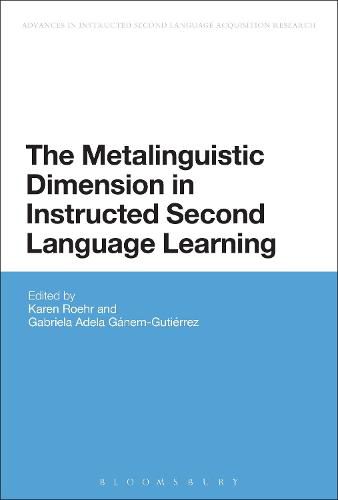Readings Newsletter
Become a Readings Member to make your shopping experience even easier.
Sign in or sign up for free!
You’re not far away from qualifying for FREE standard shipping within Australia
You’ve qualified for FREE standard shipping within Australia
The cart is loading…






The metalinguistic dimension refers to the way in which learners bring to bear knowledge about language into their learning of a second language, the L2 . This book brings together new research on the metalinguistic dimension, given its increasing importance in the study of L2 acquisition.
In applied linguistics it is widely accepted that L2 learners develop and use knowledge about language when engaging with the challenging task of acquiring a new language; this applies to both children and adults. It is definitions of the metalinguistic dimension that vary, and findings regarding its role in L2 learning are not necessarily homogenous or compatible. The scope exists for further, empirical, detailed research. This book explores the nature, development and role of the metalinguistic dimension and will be essential reading for all SLA scholars and those working in language and education.
$9.00 standard shipping within Australia
FREE standard shipping within Australia for orders over $100.00
Express & International shipping calculated at checkout
The metalinguistic dimension refers to the way in which learners bring to bear knowledge about language into their learning of a second language, the L2 . This book brings together new research on the metalinguistic dimension, given its increasing importance in the study of L2 acquisition.
In applied linguistics it is widely accepted that L2 learners develop and use knowledge about language when engaging with the challenging task of acquiring a new language; this applies to both children and adults. It is definitions of the metalinguistic dimension that vary, and findings regarding its role in L2 learning are not necessarily homogenous or compatible. The scope exists for further, empirical, detailed research. This book explores the nature, development and role of the metalinguistic dimension and will be essential reading for all SLA scholars and those working in language and education.